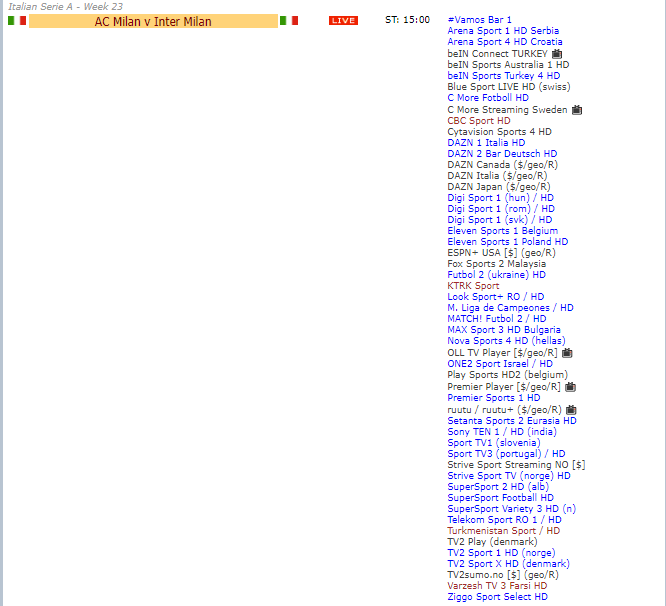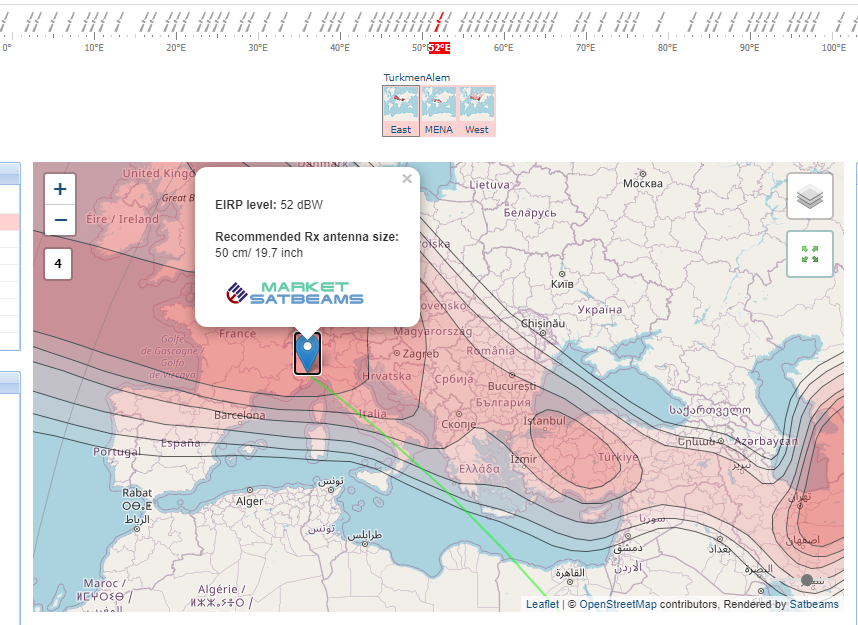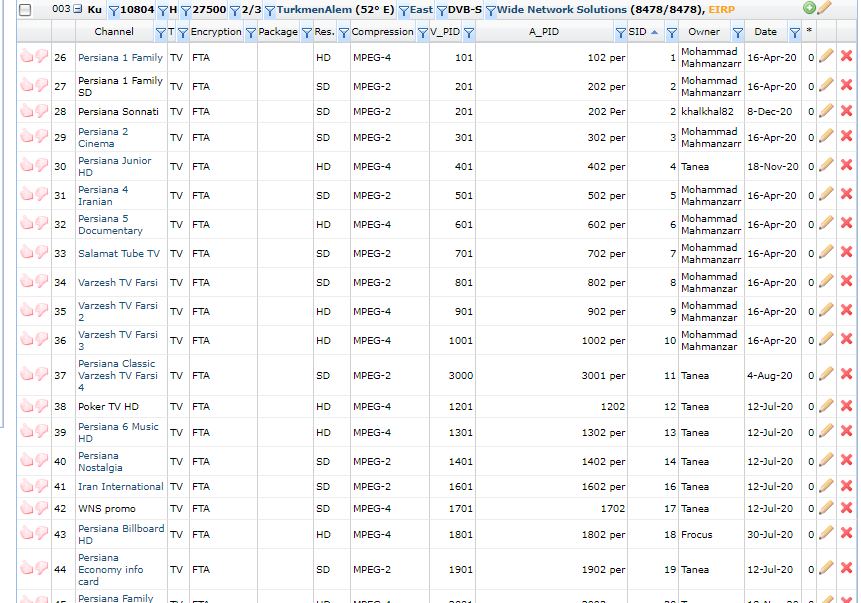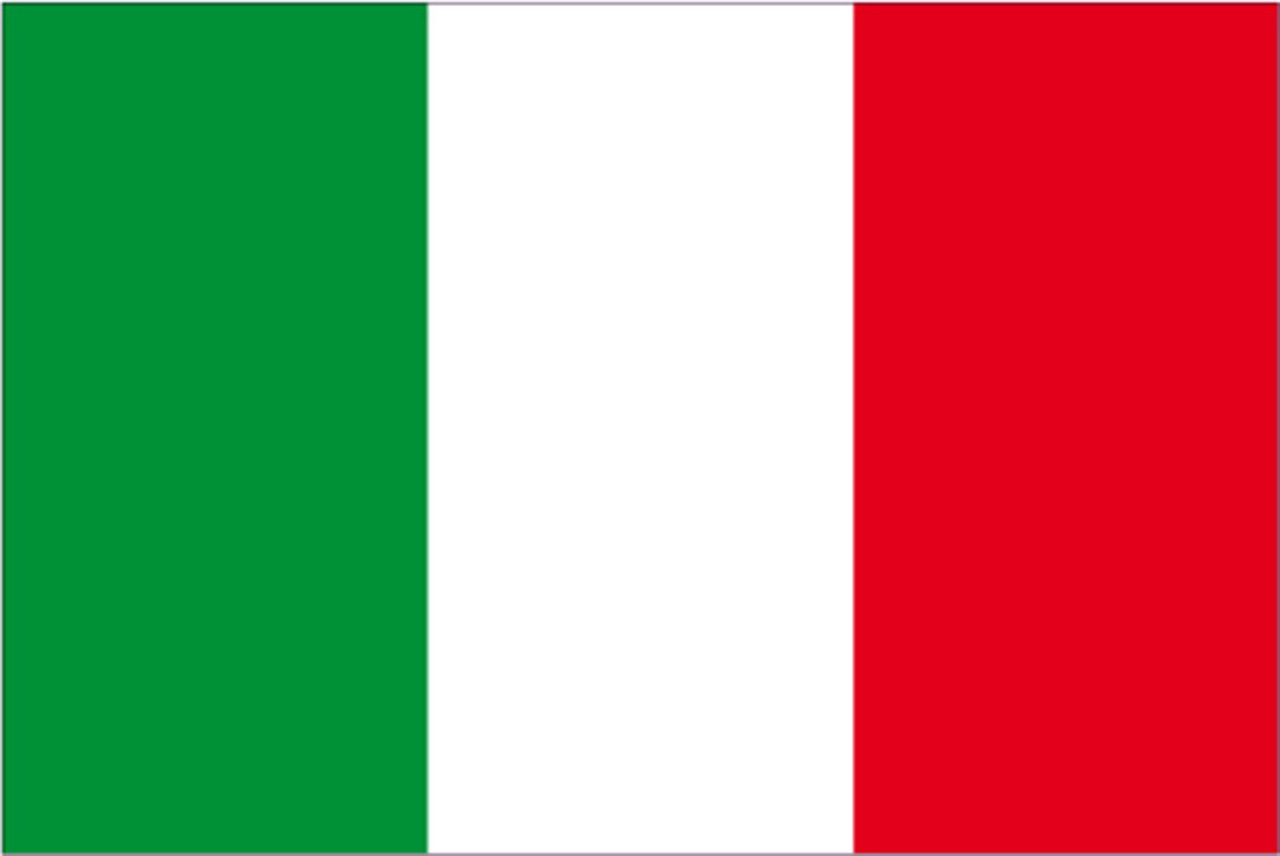
Photo by jplenio (Pixabay), CC0 Creative Commons
English version

Dear Steemit's friends,
While waiting for the Serie A to play its full twenty-third day, with the derby Milan-Inter able to say an important word about the future of the championship, today I will try to explain to sports fans like myself which method, completely legal, exists nowadays to follow football, basketball, Formula 1 or whatever your favourite competition is, in an almost free way, except for a small initial expense for the purchase of the material.
For many people, it might seem like a utopia to watch their favourite team's matches for free, abandoning the expensive subscriptions paid until now to pay TV, but I assure you that by following a quite simple principle and with an initial cost of less than one hundred euros, it is possible to ensure the enjoyment of the best sports programmes on the planet for life.
How? Quite simply, by using TV stations in other countries that broadcast via satellite free of charge. Is that all? Yes, that's it. What nobody tells us in fact is that, apart from Italy and neighbouring countries, the Italian championship, for example, is broadcast all over the world, but unlike what happens here, not in every part of the world are people so interested in spending money to be able to watch it: with the right equipment then, we can intercept those transmissions to enjoy it too.
What do we need?
First of all, make sure that you can see a large part of the sky from your home. It may sound like a joke, but if you live on the first floor of a commercial district surrounded by skyscrapers, there is a high risk that you will not have sufficient access to the TV satellites and that this system will not be able to work with you.
Essential for this process are an 80 cm satellite dish, its connecting cables, a compass and a signal strength meter. Usually everything is sold in kits, at a price of about 50 euros (you can easily find them on ebay or amazon), but to this expense you should think about adding a bracket for wall mounting or a tripod for support, as well as a satellite decoder, if you do not have a latest generation TV, which usually already includes it inside.
I've bought everything, now what?
Now that you've been patient enough to follow some YouTube tutorials (that's how I started), or you've had some expert friends help you mount the dish, the fun begins.
Let's say you want to watch the Milan-Inter derby (which is being played as I write this article). First you need to know on which channels this match will be broadcast free-to-air, on which satellite, and if it is reachable from where you live. To do this, connect to the site liveonsat.com, a true point of reference for lovers of sports on TV, in the section concerning Italian football.

Screenshot from www.liveonsat.com
Here you will find the list of all the TVs in the world that are planning to broadcast our match, but we are only interested in those indicated in red, which correspond to the Free To Air ones.
Considering in our example that we are in my area (north-west of Italy), let's take into consideration the last proposal, the channel Varzesh TV3 Farsi, broadcast on the MonacoSat 52° East satellite, which we know can be easily intercepted from our home. By clicking on the name of the channel, we can find out which satellite the match is being broadcast on.

Screenshot from www.liveonsat.com
Of course, not all satellites transmit over Italy, and not all of those that do cover your area of residence; with a little experience you will learn by heart their names, how to reach them and whether or not they are suitable for you, but initially you will have to rely on the website satbeam.com, which will tell you whether or not the chosen satellite can be your ally.
After searching through the list of all the satellites in the world (they are listed in order from west to east), it is necessary to find out the signal strength in your area, and with great satisfaction, placing the indicator at our region, we discover that with our 80 cm dish we can guarantee excellent reception (as you can see, even a much smaller one, about 50 cm, would be sufficient).

Screenshot from www.satbeams.com
Before positioning and bolting down the dish, preparing the popcorn and taking the beers out of the fridge, we need to do one last check to find out if the transponder covering your area actually has the channel we are interested in among its channels. Also from satbeams.com, open the Charts section of your satellite and look for the presence of the channel Varzesh TV3 Farsi (visible at position 36).

Screenshot from www.satbeams.com
Conclusions
The whole thing may seem confusing and complicated, but I assure you that it is more difficult to explain this system than to implement it. Keep in mind that, once you have acquired the necessary practice in the placement of the dish, everything will seem like child's play and that many times you will not even need to change channel, since the matches of your favourite team may be broadcast for several weeks in a row on the same channel.
If you are a fan of commentary you will of course have to make do with commentary in the local language, but as far as I'm concerned I have amusingly bid farewell to Caressa (Italy's most famous commentator) and co, deciding to use the money I paid before for Pay TV for other projects.

Dear friends!
My novel "THE GREAT SECRET TOURNAMENT" is now available (only Italian language) in the Montag publishing house's online store Link to presentation page.
Those interested can buy it CLICK HERE.
Thank you to everyone who wants to support me in this new adventure.
Read also:
- AC Milan v Inter: best matches of the past
- Porto v Juventus 2-1: Like Lyon, but much worse
- Unforgettable Italy: A love of pizza
- Serie A review, Week 22)
- Porto v Juventus: All previous matches
Versione italiana

Cari amici di Steemit,
nell'attesa che la Serie A disputi per intero la sua ventitreesima giornata, con tanto di derby Milan-Inter capace di dire una parola importante sul futuro del campionato, oggi proverò a spiegare agli appassionati di sport come il sottoscritto quale metodo, del tutto legale, esiste al giorno d'oggi per seguire il calcio, il basket, la Formula 1 o qualunque sia la vostra competizione preferita, in maniera pressochè gratuita, se si eccettua una piccola spesa iniziale per l'acquisto del materiale.
Per molti potrebbe sembrare un sogno assistere alle partite della propria squadra del cuore gratuitamente, abbandonando i costosi abbonamenti pagati fino ad oggi alle pay tv, ma vi assicuro che seguendo un principio piuttosto semplice e con una spesa iniziale inferiore ai cento euro è possibile assicurarsi a vita la fruizione dei migliori programmi sportivi del pianeta.
In che modo? Semplice, sfruttando le emittenti televisive degli altri Paesi che trasmettono via satellite in maniera gratuita. Tutto qui? Sì, tutto qui. Quello che nessuno ci dice infatti è che, oltre che in Italia e nei Paesi limitrofi, il campionato italiano, ad esempio, viene trasmesso in tutto il mondo, ma a differenza di quel che accade da noi, non in ogni parte del globo le persone sono così tanto interessate a spendere dei soldi per poterlo guardare: con i mezzi giusti quindi, possiamo intercettare quelle trasmissioni per goderne anche noi.
Di cosa abbiamo bisogno?
Per prima cosa assicuratevi che da casa vostra si veda un'ampia porzione di cielo. Può sembrare una battuta, ma se abitate al primo piano di una quartiere commerciale circondato da grattacieli c'è il forte rischio che non abbiate sufficiente accesso ai satelliti televisivi e che quindi con voi questo sistema non possa funzionare.
Indispensabili per questo processo sono poi una parabola satellitare da 80 cm, relativi cavi di collegamento, una bussola e un misuratore di intensità del segnale. Di solito il tutto viene venduto in kit, ad un prezzo di circa 50 euro (li trovate facilmente su ebay o amazon), ma a questa spesa dovete pensare di aggiungere una staffa per il fissaggio a muro o un treppiede per il sostegno, oltre ad un decoder satellitare, se non disponete di una TV di ultima generazione, che di solito già lo include al proprio interno.
Ho comprato tutto, e adesso?
Adesso che armati di buona pazienza avete seguito qualche tutorial su YouTube (io ho cominciato così), o vi siete fatti aiutare da qualche amico esperto per il montaggio della parabola, inizia il bello.
Mettiamo che vogliate assistere al derby Milan-Inter (che si sta giocando mentre scrivo questo articolo). Per prima cosa dovete sapere su quali canali questa partita verrà trasmessa in chiaro, su quale satellite, e se esso è raggiungibile dal luogo in cui abitate. Per fare questo vi collegate al sito liveonsat.com, vero punto di riferimento per gli amanti dello sport in TV, nella sezione che riguarda il calcio italiano.

Screenshot from www.liveonsat.com
Qui troverete la lista di tutte le TV del mondo che hanno in programma di trasmettere la nostra partita, ma a noi interessano solo quelle indicate in rosso, che corrispondono a quelle Free To Air, ovvero gratuite.
Considerando nel nostro esempio di trovarci nella mia zona (nord-ovest dell'Italia), prendiamo in considerazione l'ultima proposta, il canale Varzesh TV3 Farsi, trasmesso sul satellite MonacoSat 52° Est, che sappiamo essere facilmente intercettabile da casa nostra. Cliccando sopra il nome dell'emittente possiamo infatti scoprire su quale satellite va in onda la partita.

Screenshot from www.liveonsat.com
Naturalmente non tutti i satelliti trasmettono sull'Italia e tra quelli che lo fanno non tutti coprono la vostra zona di residenza; con un po' di esperienza ne imparerete a memoria i nomi, il modo con cui raggiungerli e se fanno o meno al caso vostro, ma in un primo momento dovrete affidarvi al sito satbeam.com, che vi indicherà se sopra le vostre teste il satellite prescelto può risultare o meno vostro alleato.
Dopo averlo cercato tra la lista di tutti i satelliti del mondo (sono elencati in ordine da ovest ad est) occorre infatti scoprire l'intensità del segnale nella nvostra zona, e con gran soddisfazione, posizionando l'indicatore in corrispondenza della nostra regione, scopriamo che con la nostra parabola da 80 cm possiamo garantirci un'ottima ricezione (come potete vedere ne basterebbe addirittura una molto più piccola, da circa 50 cm).

Screenshot from www.satbeams.com
Prima di posizionare e imbullonare la parabola, preparare i popcorn e togliere dal frigo le birre, occorre però fare un'ultima verifica per scoprire se il trasponder che copre la vostra zona ha effettivamente tra i suoi canali quello che ci interessa. Sempre dal sito satbeams.com aprite la sezione Charts del vostro satellite e andate alla ricerca della presenza del canale Varzesh TV3 Farsi (visibile alla posizione 36).

Screenshot from www.satbeams.com
Conclusioni
Il tutto può sembrare macchinoso e complicato, ma vi assicuro che è più difficile spiegare questo sistema piuttosto che realizzarlo. Tenete presente poi che, una volta acquistata la pratica necessaria nel posizionamento della parabola, il tutto vi sembrerà un gioco da ragazzi e che diverse volte non avrete nemmeno la necessità di cambiare canale, dato che le partite della vostra squadra del cuore potrebbero essere trasmesse per diverse settimane di fila sullo stesso canale.
Se siete appassionati di telecronache ovviamente vi dovrete accontentare di quelle effettuate nella lingua locale, ma per quel che mi riguarda ho simpaticamente dato l'arrivederci a Caressa e soci, decidendo di utilizzare i soldi pagati prima per la Pay TV per altri progetti.


